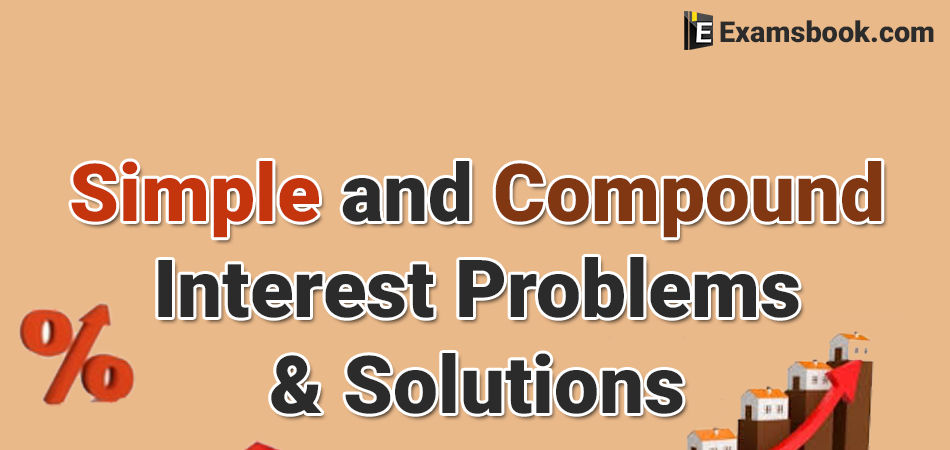Simple Interest and Compound Interest Problems and Solutions

In the competitive exams, two types of interest questions asked, first is simple interest and second is compound interest. Both types are important by the perspective of SSC and Banking exams.
So, here are given simple interest and compound interest problems and solutions for your preparation. If you want to save your time in competitive exams, you should practice these problems with solutions.
As well as you can understand easily about Simple and Compound Interest Formulas that how to use formulas in these types of questions.
Problems with Solutions of Simple and Compound Interest
Q.1. The difference between Compound Interest and Simple Interest on a certain sum of money at 10 % per annum for 3 years is Rs. 930. Find the principal if it is known that the interest is compounded annually.
(A) 30000
(B) 35000
(C) 40000
(D) 45000
(E) None of these
Ans . A
The Simple Interest after three years @ 10% is 30%.
The Compound Interest after 3 years @ 10% will be 1.1 × 1.1 × 1.1 = 1.331
Cumulative rate of Interest is 33.1%.
Here, the difference after 3 years is 3.1% and in the question, it is given to be Rs. 930.
Thus, the Principal is 930 × (100/3.1) = Rs. 30000.
Q.2. An automobile financier claims to be lending money at simple interest, but he includes the interest every six months for calculating the principal. If he is charging an interest of 10%, the effective rate of interest becomes:
(A) 10%
(B) 10.25%
(C) 10.5%
(D) Data inadequate
(E) None of these
Ans . B
Let the sum be Rs.100. Then,
S.I. for first 6 months
= Rs. [100 × 10 × 1 / 100 × 2] = Rs.5
S.I. for last 6 months = Rs. [105 × 10 × 1 / 100 × 2] = Rs.5.25
So, amount at the end of 1 year = Rs. (100 + 5 + 5.25) = Rs.110.25
So, effective rate = (110.25 ⎯ 100) = 10.25%
Q.3. The simple interest on a sum of money in 5 years at 12 % per annum is Rs. 400 less than the simple interest accrued on the same sum in 7 years at 10 % per annum. Find the sum.
(A) 3500
(B) 4000
(C) 4500
(D) 2500
(E) None of these
Ans . B
Let the sum be P.
→ SI in 5 years at 12 % per annum = P x 12 x 5 / 100 = 0.6 P
→ SI in 7 years at 10 % per annum = P x 10 x 7 / 100 = 0.7 P
Now, according to the question,
0.7 P – 0.6 P = 400
→ 0.1 P = 400
→ P = 4000
Thus, the required sum is Rs. 4000
Q.4. Aman took a loan from a bank at the rate of 12% p.a. simple interest. After 3 years he had to pay Rs. 5400 interest only for the period. The principal amount borrowed by him was:
(A) Rs. 2000
(B) Rs. 10,000
(C) Rs. 15,000
(D) Rs. 20,000
(E) None of these
Ans . C
Principal = Rs. [ 100 × 5400 / 12 × 3] = Rs.15000
Q.5. If Rs. 5000 amounts to Rs. 5832 in two years compounded annually, find the rate of interest per annum.
(A) 6.8%
(B) 7.1%
(C) 8%
(D) 9%
(E) None of these
Ans . C
Here, P = 5000, A = 5832, n = 2
A = P [1 + (R / 100)]n
→ 5832 = 5000 [1 + (R / 100)]2
→ [1 + (R / 100)]2 = 5832 / 5000
→ [1 + (R / 100)]2 = 11664 / 10000
→ [1 + (R / 100)] = 108 / 100
→ R / 100 = 8 / 100
→ R = 8 %
Thus, the required rate of interest per annum in 8 %
For more Simple and Compound Interest questions and answers, Visit next page.



